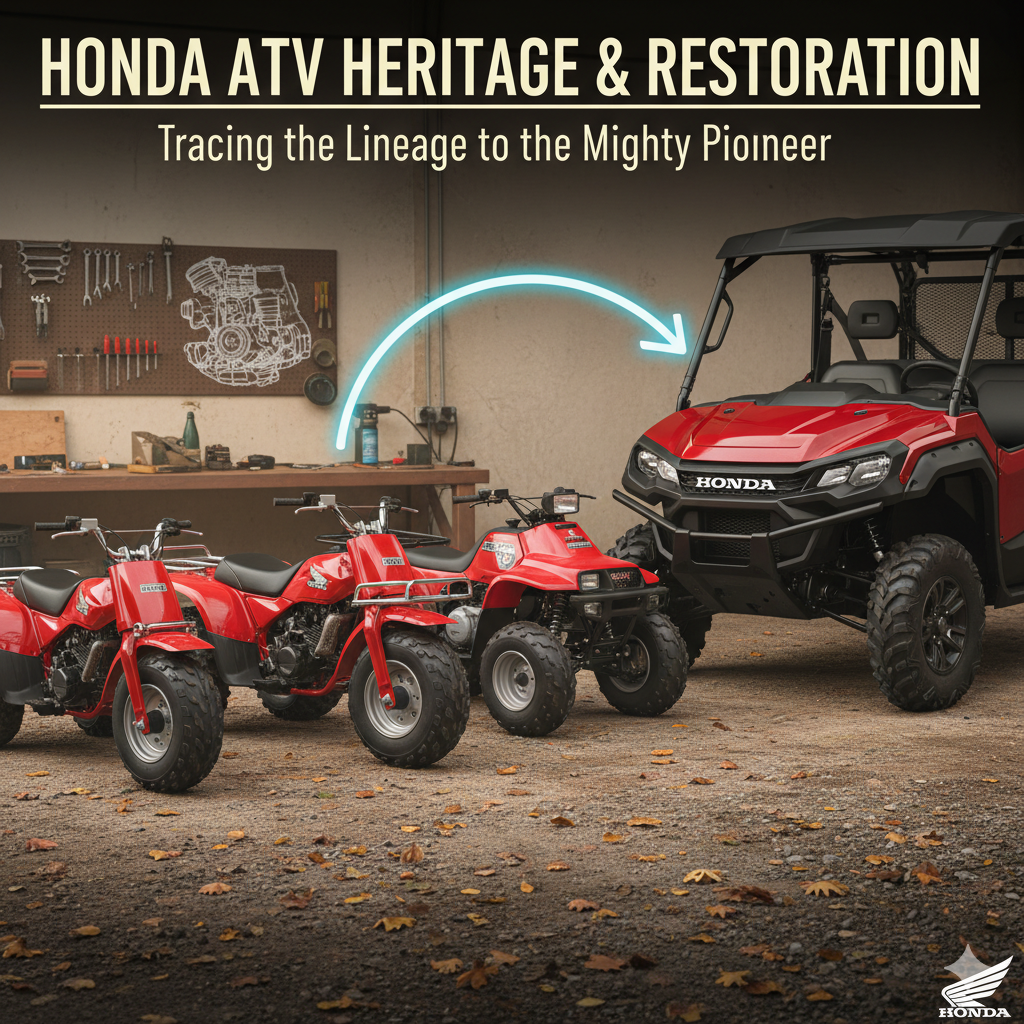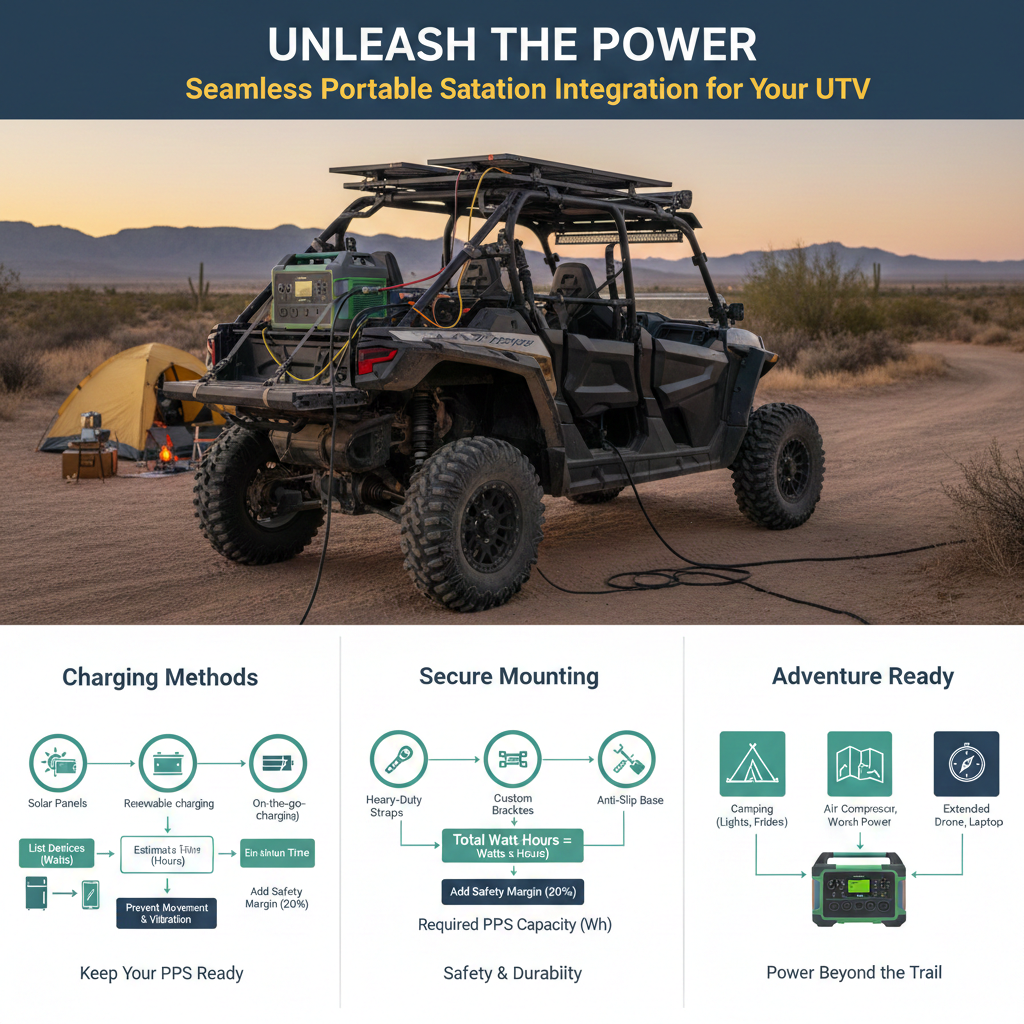Hello, fellow off-road enthusiasts!
It’s an absolute thrill to welcome you back to the blog.
Today, I want to take you on a personal journey, a deep dive into the very roots of the machine we all love: the Honda Pioneer.
To truly appreciate the rugged capability and ingenious design of the Pioneer, we have to look back—way back—to the machines that started it all.
This isn’t just a history lesson; it’s a testament to the Honda DNA that flows through every bolt and bracket of your modern UTV.
For me, the smell of two-stroke oil and the sight of a faded red plastic fender instantly transport me to a simpler time.
That time was the late 1970s and early 1980s, the golden age of the All-Terrain Cycle (ATC).
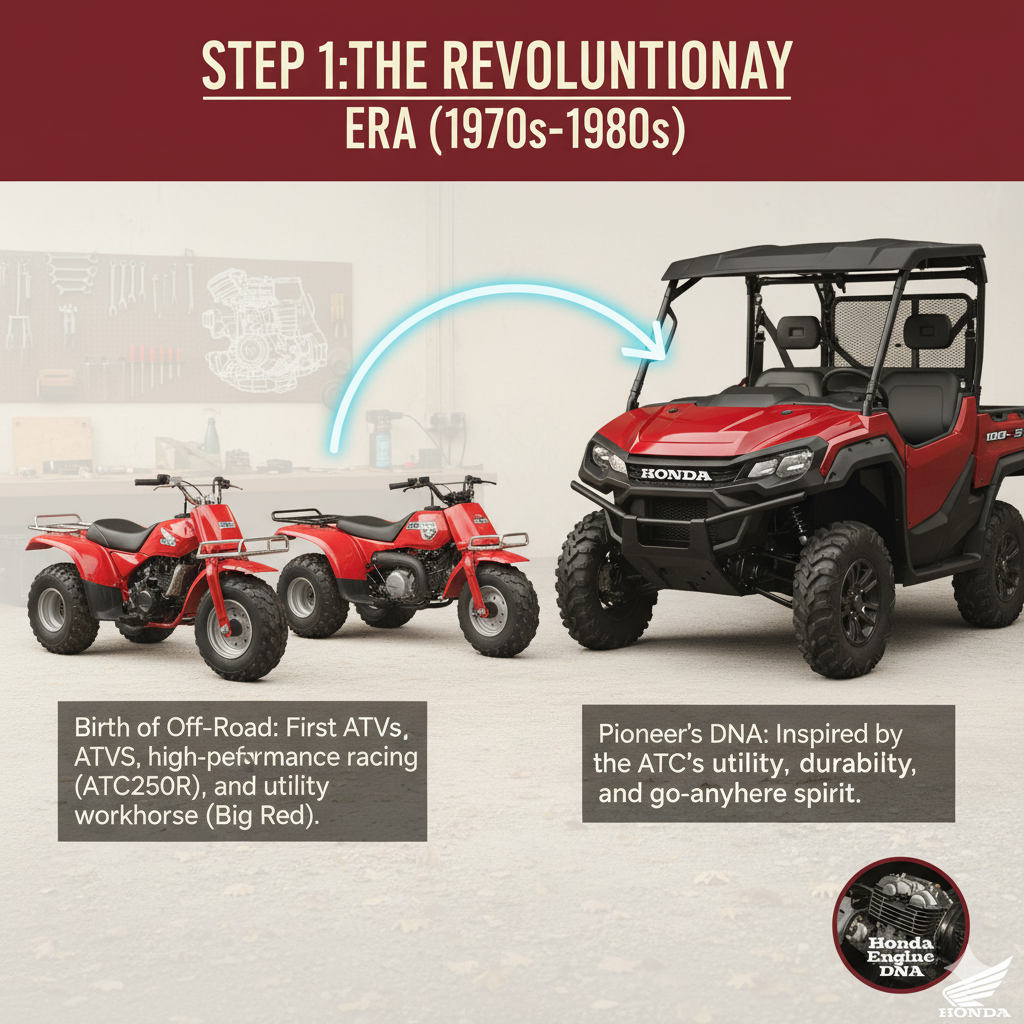
The Three-Wheeled Revolution: The ATC Legacy
The story of Honda’s off-road dominance begins not with four wheels, but with three.
In 1970, Honda introduced the US90, later renamed the ATC90.
This wasn’t just a new vehicle; it was a completely new category of recreation.
It was designed to be a go-anywhere machine, capable of tackling snow, sand, and mud with its massive, low-pressure balloon tires.
I remember the first time I saw one.
It looked like a motorized tricycle from another planet!
But its impact was undeniable.
It was a machine that democratized off-roading.
Suddenly, the backcountry was accessible to everyone.
The ATC line evolved rapidly, giving us legendary models that are now highly sought-after restoration projects:
- The ATC70 (1973): The little brother, often a child’s first taste of powersports.
- The ATC250R (1981): The performance king. This was Honda’s answer to the need for speed, a high-performance, water-cooled two-stroke machine that dominated the racing circuits. It was the ATV equivalent of a muscle car, and its engineering pushed the boundaries of what was possible in off-road suspension and power.
- The Honda Big Red (1981): The true utility hero. The Big Red was the first ATC designed specifically for work, featuring racks, a tow hitch, and a focus on durability. This is the direct ancestor of the Pioneer, embodying the utility-first mindset.
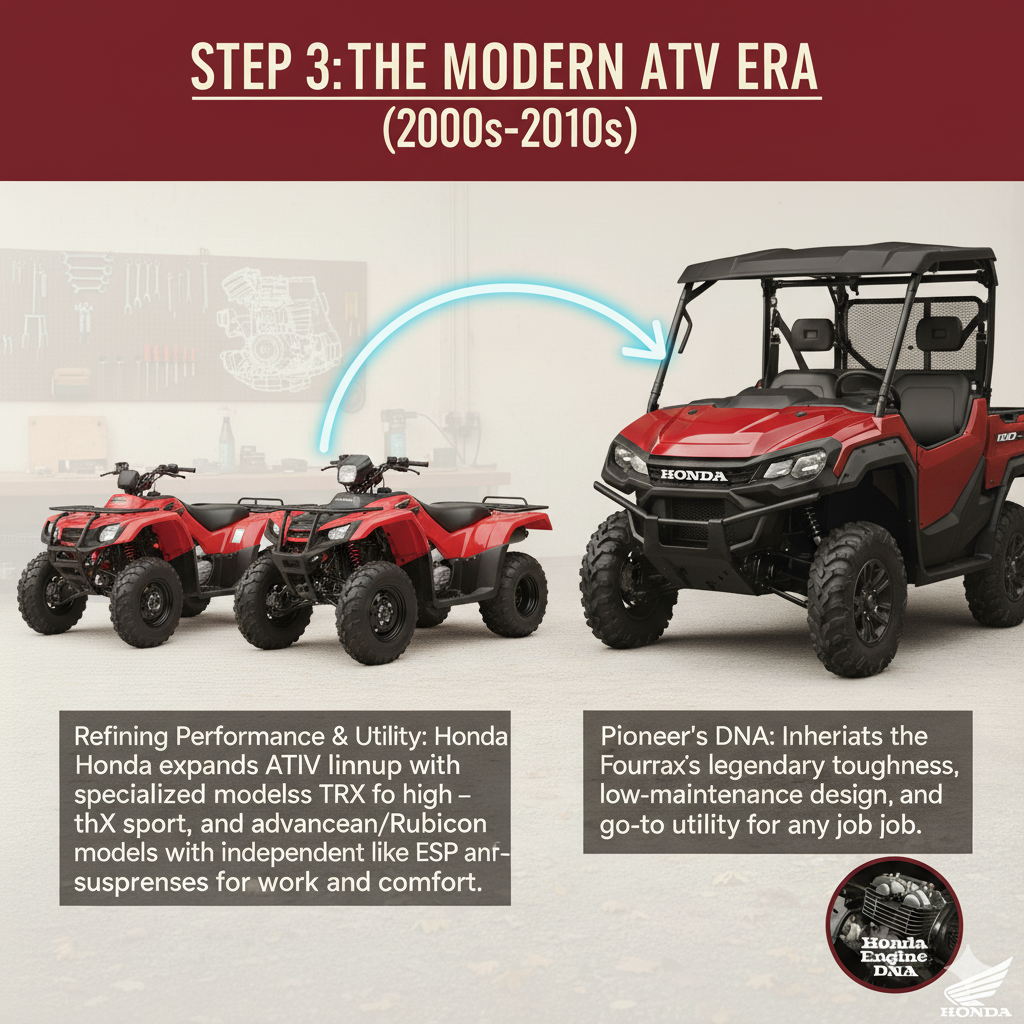
The engineering lessons learned from the ATC—specifically, the need for robust frames, reliable engines, and innovative suspension—were critical.
The ATC’s eventual transition to four wheels was driven by safety concerns and the pursuit of even greater stability and performance.
The Birth of the FourTrax and the Utility Shift
In 1984, Honda made history again by introducing the first mass-produced four-wheeled ATV: the TRX200 FourTrax.
This machine marked a pivotal shift.
It took the go-anywhere spirit of the ATC and combined it with the stability of four wheels.
But the real game-changer for the utility segment, and the direct precursor to the UTV, was the FourTrax 300 (1988-2000).
This machine is an icon.
Its legendary reliability and bulletproof design made it the workhorse of farms, ranches, and trails across the globe.
Why is this relevant to the Pioneer?
Because the FourTrax 300 established the core principles that define the Pioneer today:
- Unwavering Reliability: The expectation that a Honda utility machine will not fail.
- Compact Utility: The ability to carry gear and tackle tough jobs without being overly cumbersome.
- Mechanical Simplicity: Easy to maintain and repair, a trait that makes the Pioneer so appealing to owner-operators.
The FourTrax 300 was, in many ways, the first step toward a true utility vehicle.
It showed Honda that the market craved a machine that was as good at hauling hay as it was at hitting the trails.
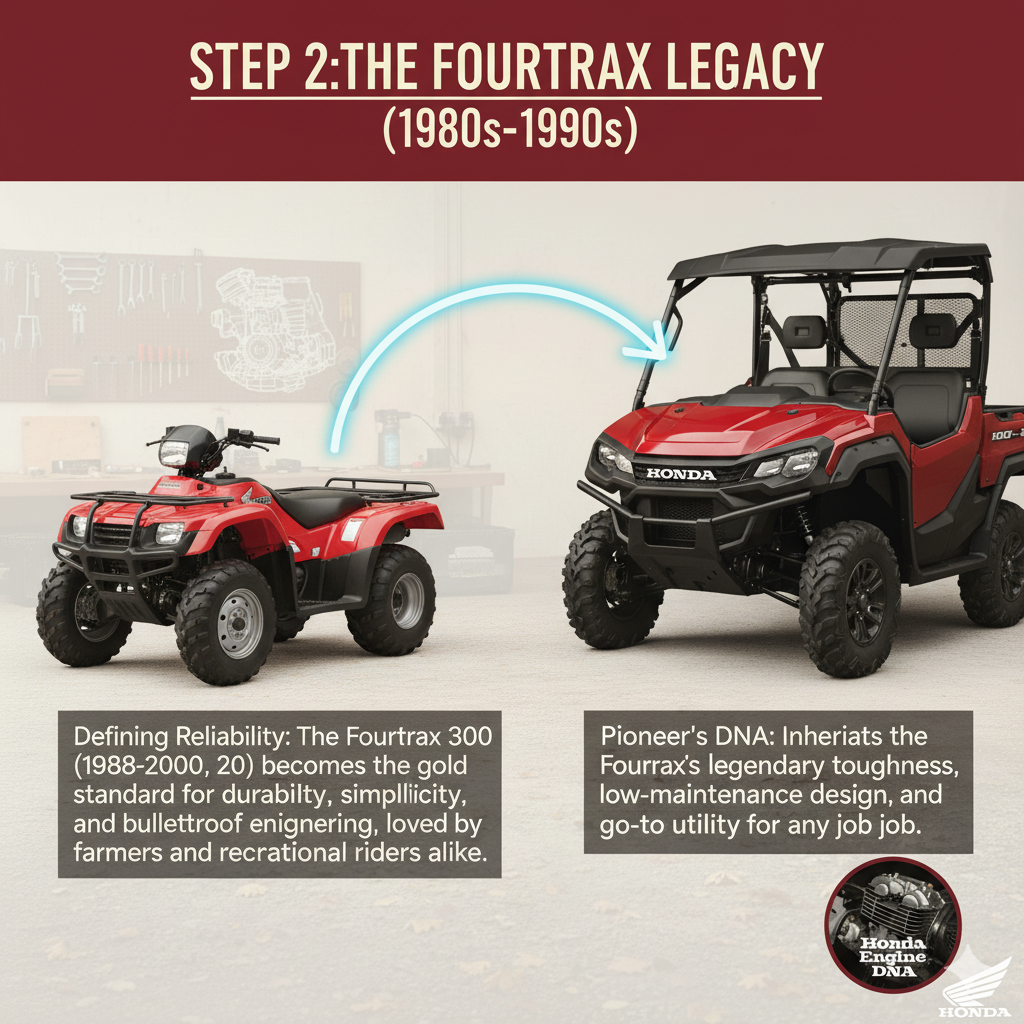
The Art of Restoration: Preserving the Pioneer’s Ancestors
For many of us, owning a modern Pioneer is a dream come true, but for a dedicated few, the real passion lies in restoring its ancestors.
Restoration is more than just fixing a machine; it’s an act of preserving history and honoring the engineering that made the Pioneer possible.
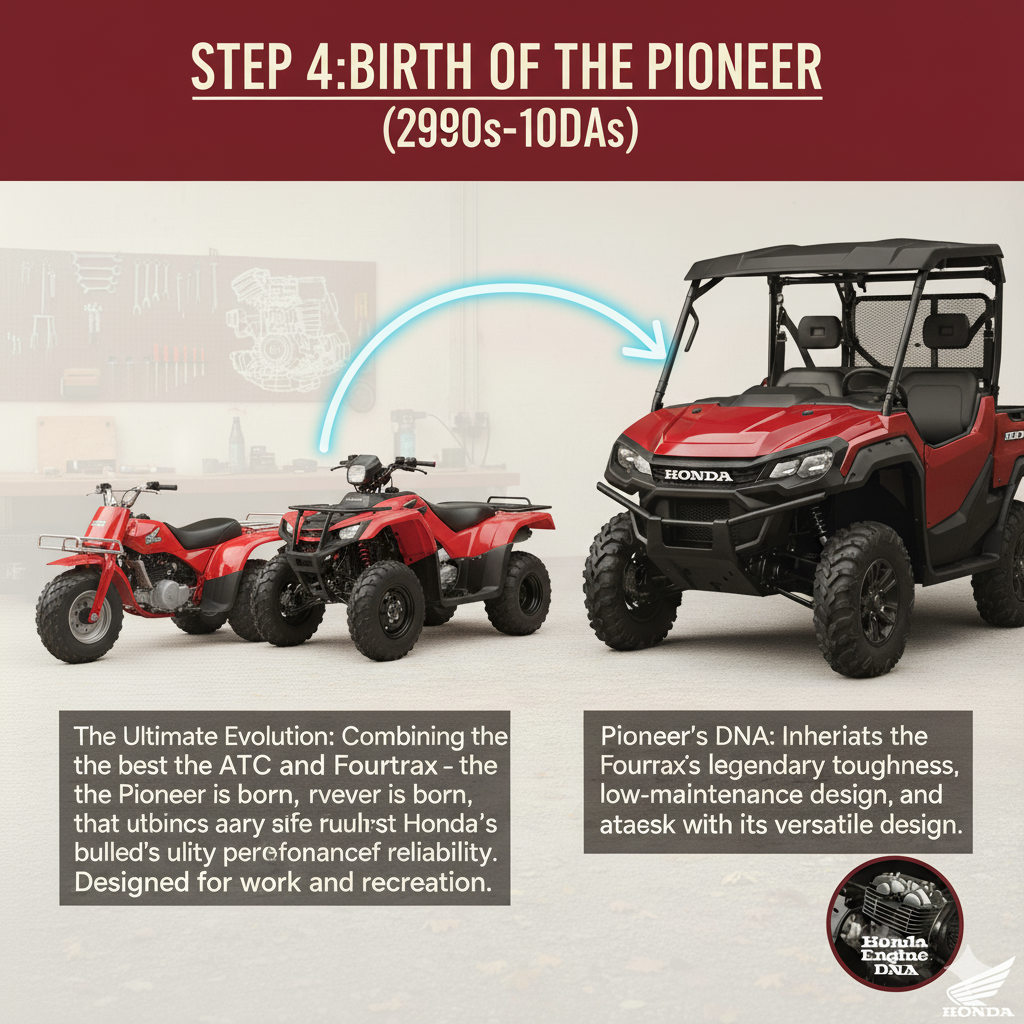
A Step-by-Step Restoration Guide for a Classic Honda ATC or FourTrax
If you’re thinking of diving into a restoration project, here is a personal, step-by-step approach I recommend.
| Step | Focus Area | Key Tasks | Pioneer Connection |
|---|---|---|---|
| 1. Assessment & Documentation | The “Before” Stage | Thoroughly document the condition with photos. Check frame integrity for cracks or rust. Run a compression test on the engine. Create a detailed parts list. | Durability Check: Pioneers are known for their robust frames; this step honors the need for a solid foundation. |
| 2. Teardown & Cleaning | The Deep Clean | Completely disassemble the machine down to the bare frame. Media blast the frame and all metal components. Clean every nut, bolt, and washer. | Attention to Detail: The precision engineering in a Pioneer demands attention to detail, which starts with a clean slate. |
| 3. Frame & Suspension | The Foundation | Repair any frame damage. Apply a fresh powder coat (often Honda Red or a period-correct color). Rebuild the suspension with new bushings, bearings, and seals. | Ride Quality: Modern Pioneer suspension is plush; rebuilding vintage suspension brings it closer to that modern feel. |
| 4. Engine Rebuild | The Heartbeat | Disassemble the engine. Replace piston, rings, and gaskets. Check the crank for run-out. Rebuild the carburetor and ensure all internal components are within factory specifications. | Reliability: Honda engines are legendary. A proper rebuild ensures the vintage machine lives up to the same standard as a new Pioneer. |
| 5. Plastics & Aesthetics | The Showpiece | Source NOS (New Old Stock) or high-quality reproduction plastics. Apply new decals and seat cover. Polish or replace all chrome and aluminum components. | Brand Identity: The iconic Honda red and clean lines are a hallmark of both vintage ATVs and the modern Pioneer. |
| 6. Reassembly & Tuning | The Final Product | Carefully reassemble the machine, using a torque wrench for all critical fasteners. Bleed the brakes. Fill with fresh fluids. Tune the carburetor for optimal performance. | Performance: A well-tuned vintage machine performs with the same predictable excellence you expect from your Pioneer. |
The Legacy Lives On in the Pioneer
Every time you climb into your Honda Pioneer, whether it’s a compact Pioneer 500 or a massive Pioneer 1000-6 Deluxe, you are experiencing the culmination of this incredible heritage.
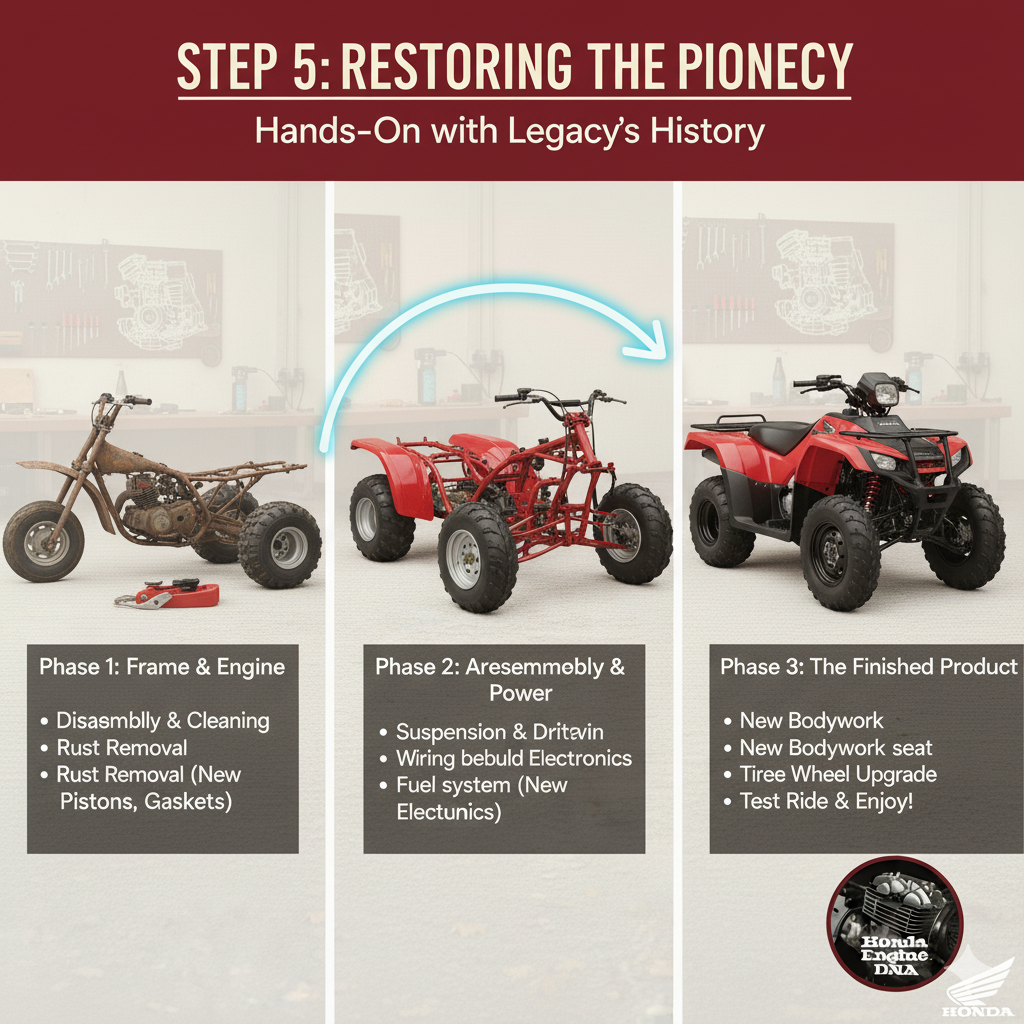
The Big Red ATC taught Honda the value of utility.
The FourTrax 300 taught them the meaning of bulletproof reliability.
The ATC250R taught them about performance and innovation.
The Pioneer is not just a UTV; it is the ultimate expression of Honda’s 50+ year commitment to building the best off-road machines in the world.
It carries the torch of the ATC, combining work-ready utility with trail-ready performance, all wrapped up in the legendary reliability that only a Honda can offer.
So, the next time you’re out on the trail or hauling a load, take a moment to appreciate the history under your seat.
And if you ever find an old, rusted ATC in a barn, remember: you’re not just looking at junk; you’re looking at the genesis of the Pioneer.
Happy riding, and happy restoring!
References & Further Reading
- [1] Honda ATV Model History Timeline, 1970-Present
- [2] History of Honda ATVs: Leading the Off-Road Revolution
- [3] The Honda Big Red: The Utility ATC
- [4] The Bulletproof FourTrax 300

